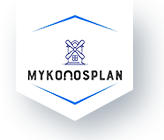Topcoat Plaster
In the simplest terms, the plaster topcoat is just a thin layer of paint applied to the scratch coat. When it is bought in a can from a hardware or home improvement store, it typically contains fungicide and mildewcide , but that’s not what makes it a topcoat. Rather, the surface of this last coat, called the ‘cure,’ will have a smoothness and gloss level that perfectly blends with your painted wall tones.
It is the final layer of coating necessary before you paint over the wall. Generally, in a three-coat system, the topcoat, otherwise known as the finish coat, goes on after the scratch and undercoat.
The topcoat provides a fine, uniform surface that showcases the beauty of a well-made paint job. It can be matte or glossy. For a matte topcoat, you could use a flat paint, a satin paint or an eggshell paint. You can also use a low-sheen formula for a soft luster.
The top coat is the last chance the painter gives you to get it right. The top coat is supposed to cover everything, level everything out and give it a nice finish. It doesn’t get any better than that. If the architect did a terrible job on the blueprints, there’s not much you can do about it at this stage of the construction. It’s therefore important that you choose the right plasterer with enough experience working on all three coat layers.












